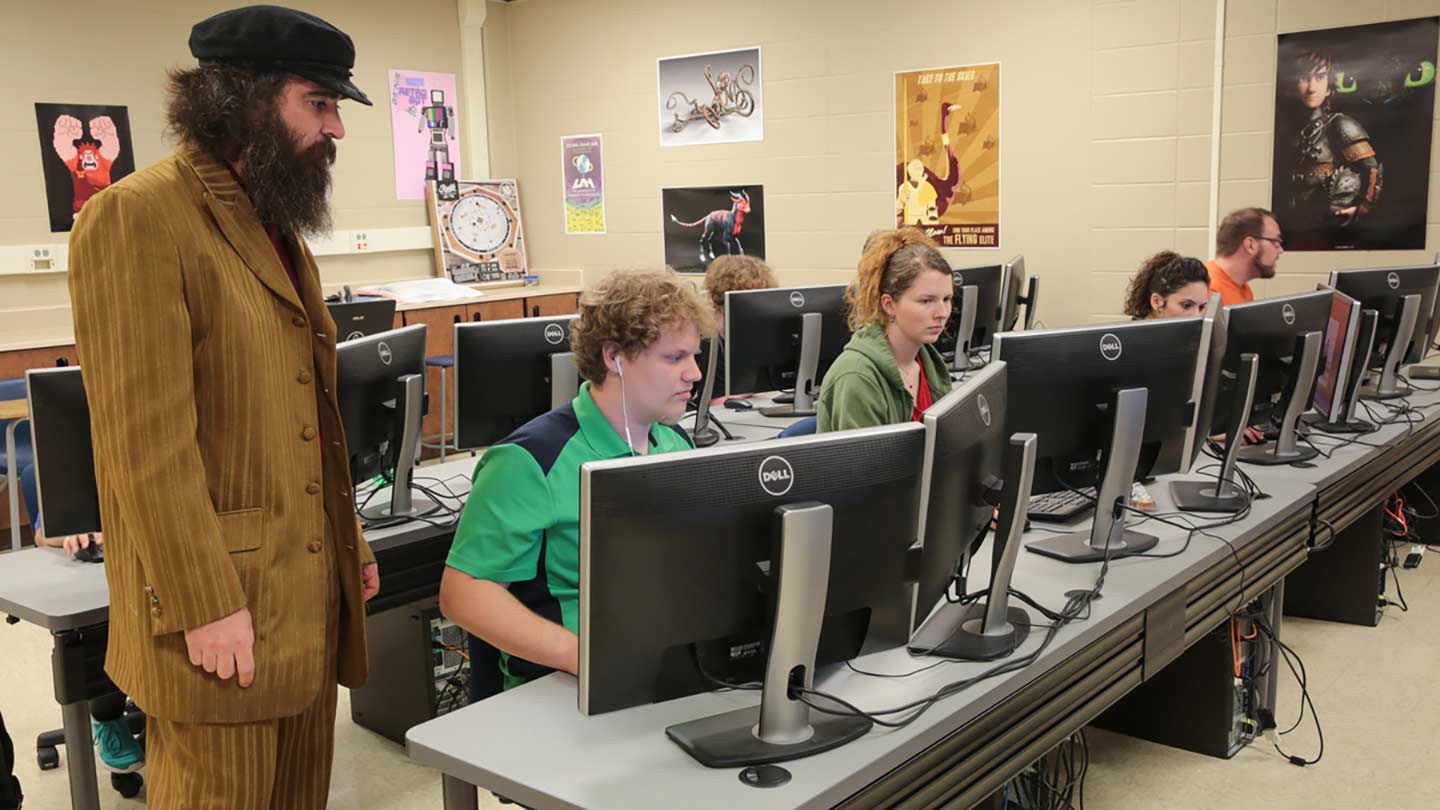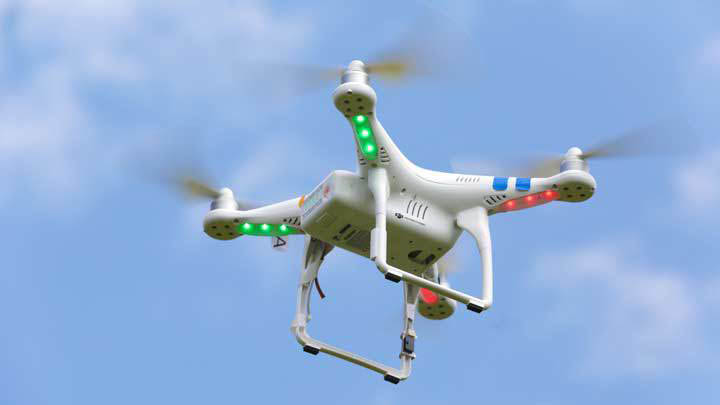
Vinny Argentina, Associate Professor in Department of Art, Art History & Design, partners with UAH RSESC to create CAT lab project.
Michael Mercier | UAH
The Department of Art, Art History & Design at The University of Alabama in Huntsville (UAH), a part of The University of Alabama System, has teamed with the UAH Rotorcraft Systems Engineering & Simulation Center (RSESC) to establish a new collaborative project aimed at benefitting both programs.
The Commercial Arts & Technology (CAT) lab was formed as a partnership between the RSESC and Art, Art History & Design faculty and students as a way to connect the University's commercial art programs with industry partners. The lab is intended to leverage the commercial art capabilities of the Department with the technology, engineering and software expertise of the Rotorcraft Center, offering everything from virtual engineering and 3D asset development, to 2D and 3D animation for classified and unclassified projects.
The venture was spearheaded by Vinny Argentina, an Associate Professor of Art Animation & Game Design, to enable his students to provide creative digital technologies to a wide array of government and commercial applications.
“Many people think of animation and interactive tools as being limited to gaming, movies, TV etc.,” he explains. “But the truth is, animation and interactive tools are much more widely used across many industries. Many of the same tools and processes used for making AAA video games and feature films are also used for making visualizations, simulations, serious (learning/training) games, virtual engineering projects, marketing & advertising projects, etc.”
Argentina feels that initiating such a partnership generates new opportunities in a variety of areas. “There are quite a few companies in Huntsville doing these types of projects and many more that would benefit from access to a labor force that can help them. The Rotorcraft Center has a great deal of experience integrating with commercial and government partners on engineering and technical projects. I wanted to extend these types of opportunities to students in commercial arts (animation, game design, graphic design, photography, technical illustration). In addition, combining the RSESC's engineering work with Virtual Reality and Augmented Reality development opens up new workflow opportunities for both internal and external projects.”

UAH RSESC supports industry and government organizations in space mission analysis and design, qualification and fabrication of space and aircraft-mounted payload systems.
Courtesy UAH RSESC
The Rotorcraft Center is a multifaceted research center focused on providing applied engineering and systems engineering techniques, design and system analysis, rapid prototyping, integration and fabrication. RSESC has established an impressive track record supporting industry and government organizations in space mission analysis and the design, qualification and fabrication of space and aircraft-mounted payload systems.
“I first heard about the RSESC through a former student, Angela Yi, who was our very first Digital Animation Concentration BFA graduate,” Argentina notes. “I was aware of some of the work RSESC was doing, and reached out to Sue O'Brien [a Principal Research Engineer in the RSESC] to talk over the idea of creating a lab and get some feedback about my approach. Through our conversations we found that there was a good deal of overlap in our goals, and that a collaboration would be mutually beneficial. The CAT lab would benefit from RSESC's experience, infrastructure and technical prowess, and RSESC would gain several new capabilities through the lab that could serve to help with both internal and external projects.”
The collaboration has been in the works for the past year, and Argentina and his partners have met regularly and are already working on internal ventures together. “We are looking to grow the lab by connecting with external clients,” he says. “We felt a web presence was essential for connecting with local clients, and the lab's site is now live.”
The lab has been structured to be a faculty and staff led, student run organization.
“We will be able to help with internal and external projects that use commercial art elements. It could be something as tangential as poster or presentation design, or something as in-depth as virtual engineering or serious game development. We have the labor and labs to support classified projects, so that creates a niche opportunity to be outsource partners for local companies where most outsourcing options cannot do the work. Huntsville has the right mix of military, engineering, bio-medical and education to become a competitive center for virtual engineering and serious game development. We hope the CAT lab will be able to help Huntsville grow in at least some small way.”
Argentina hopes the success of this kind of partnership could help spawn future collaborative projects for the lab with other University organizations as well, by offering creative new interactive solutions.
“Potentially, yes!” he says. “I am currently working on research projects with faculty from Music, Business, Nursing, Psychology and Computer Science that are outside of the CAT lab structure, but that could use the lab moving forward. We have already talked over CAT lab client projects with faculty in Computer Science and Psychology, pending funding.”